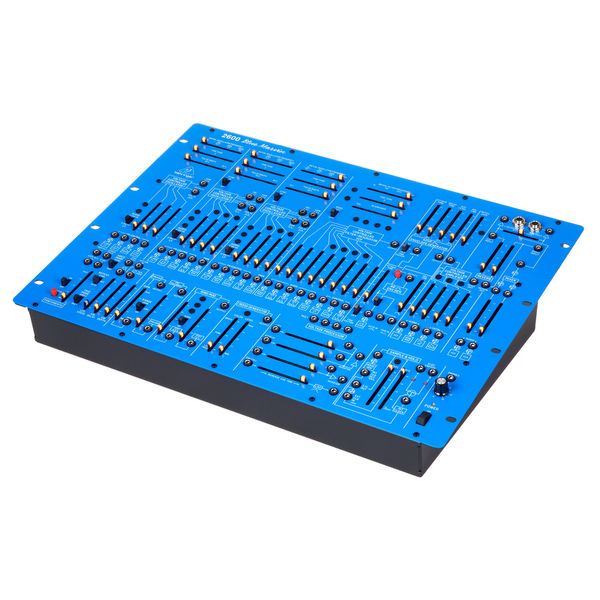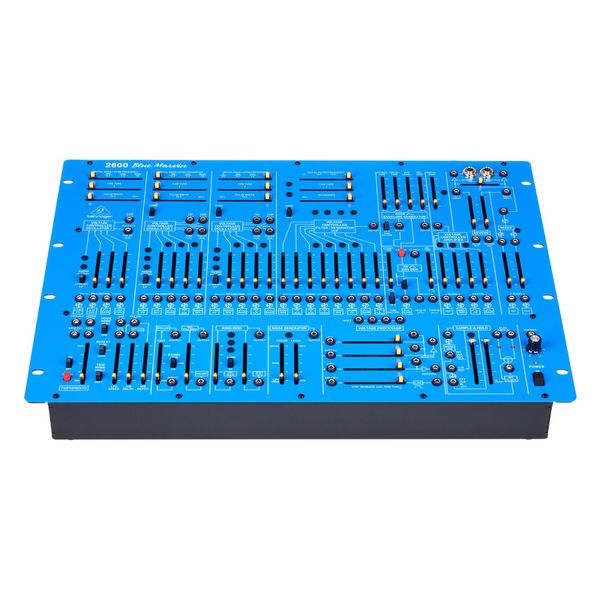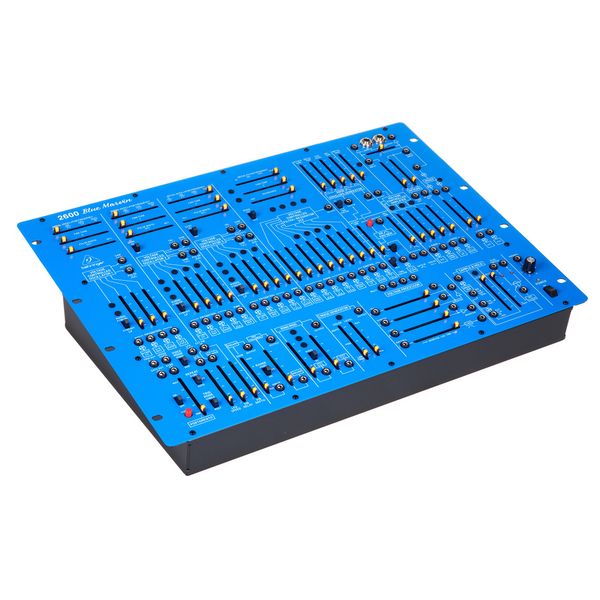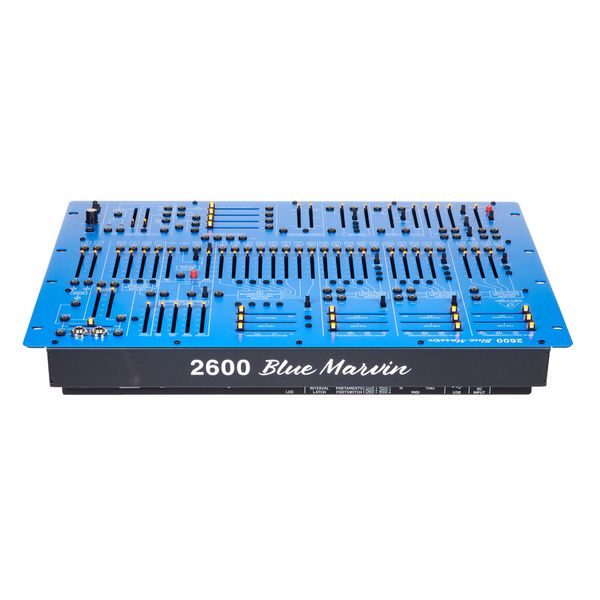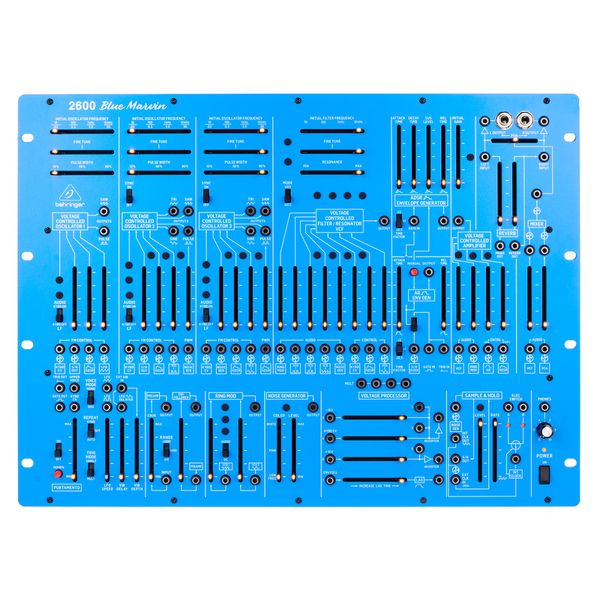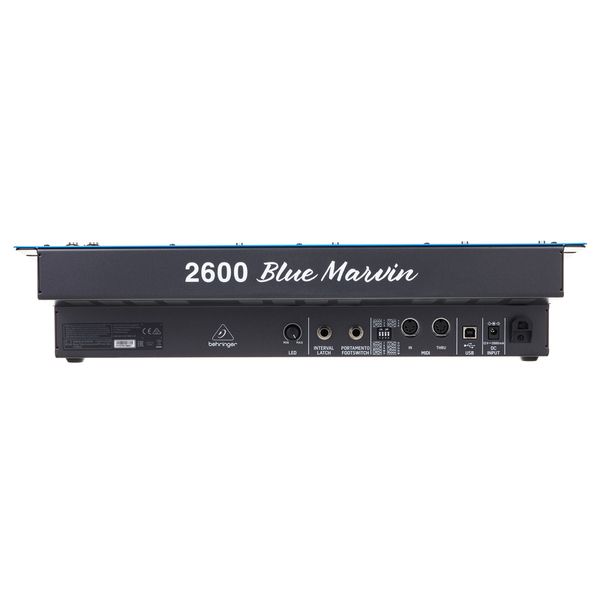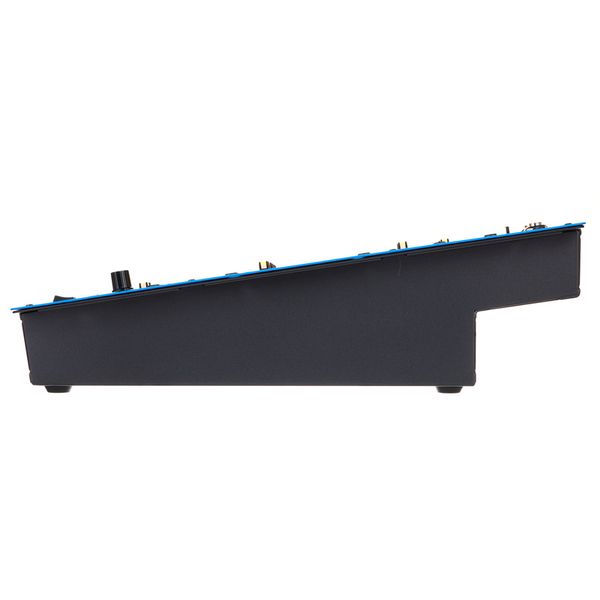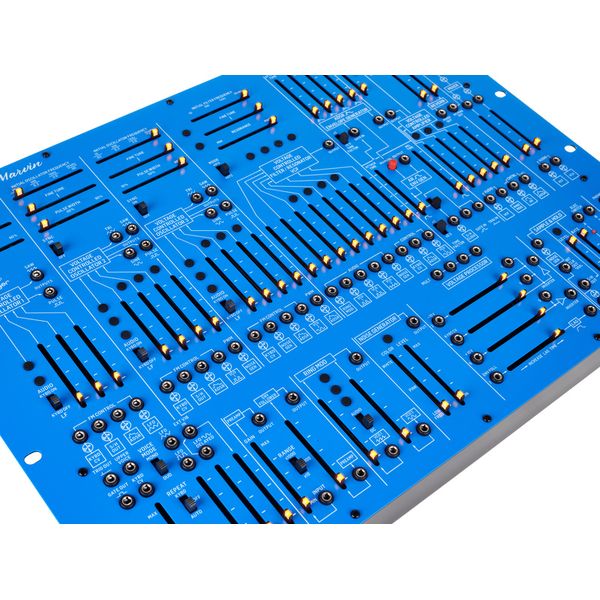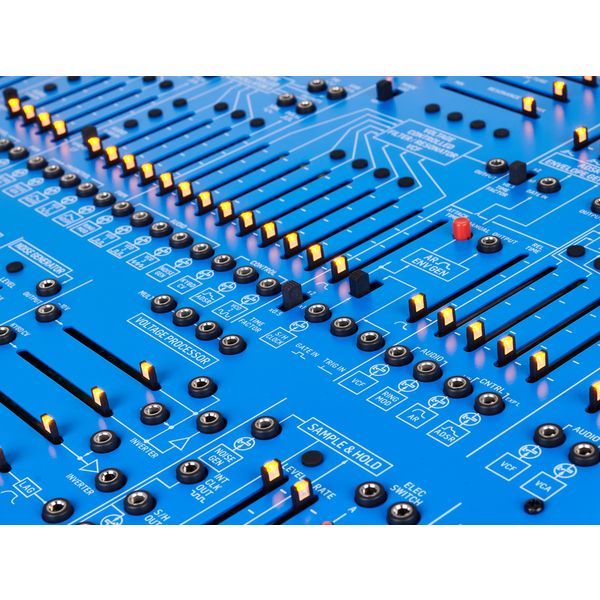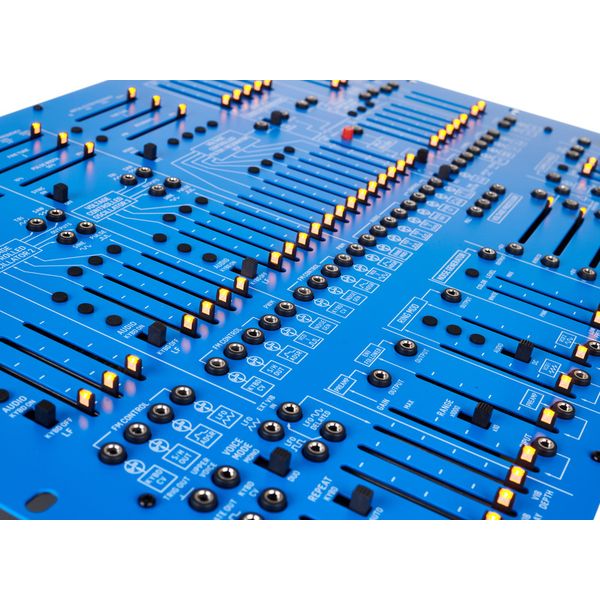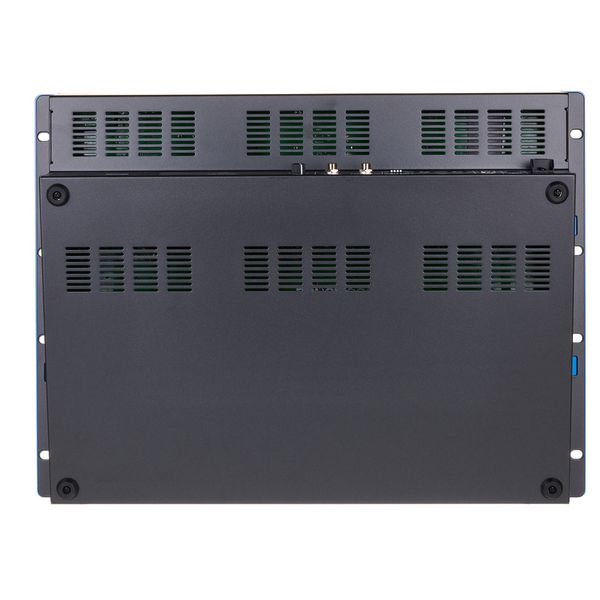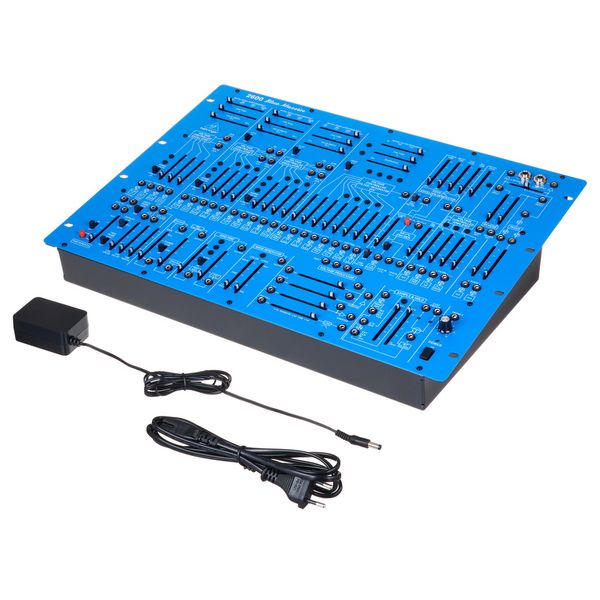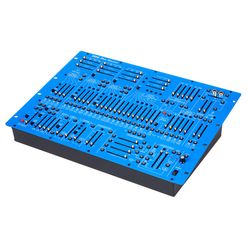Sintetizzatore analogico semi-modulare
- Edizione speciale con pannello frontale blu e componenti selezionati
- Monofonico
- 3 VCO con larghezza di impulso regolabile
- Oscillatore 1 con uscite a dente di sega e impulso
- Oscillatori 2 e 3 con sincronizzazione dell'oscillatore commutabile e uscite a triangolo, dente di sega, sinusoidale e impulso
- Filtro passa-basso con risonanza e 2 caratteristiche di filtro commutabili
- Generatore di rumore
- Modulatore ad anello
- Stadio di campionamento e mantenimento
- Preamplificatore e envelope follower per segnali esterni
- Processore di tensione
- Inviluppo ADSR
- Inviluppo AR
- VCA stereo con panorama regolabile
- Riverbero meccanico a molla regolabile
- Estese possibilità di modulazione per oscillatori e filtri grazie al percorso del segnale predefinito e al cablaggio libero di tutte le sezioni tramite prese patch (jack da 3,5 mm)
- Uscita stereo di linea: 2 jack da 6,3 mm
- Uscita stereo per cuffie: jack da 3,5 mm
- Ingressi footswitch per Interval Latch e Portamento: jack da 6,3 mm
- MIDI In/Thru
- Porta USB-B (MIDI)
- Formato: 19" / 8 U
- Dimensioni (L x A x P): 482 x 356 x 108 mm
- Peso: 5,1 kg
- Colore: blu
- Include alimentatore esterno (12 V CC, 2000 mA)
In catalogo dal
Marzo 2021
Numero di articolo
513579
Unità incluse
1 Pezzo
Design
19"
Polyphony
1
Sound Generation
Analogue
MIDI interface
1x In, 1x Thru
Storage Medium
None
USB-port
Yes
Effects
Yes
Arpeggiator
No
Number of Analog Outputs
2
Digital Output
No
Display
No
Optional Expansions
None
Special Features
Semi Modular, Mechanical Spring Reverb
Mostra altro
-
Behringer Expander in mostra
-
Mostra Expander nella gamma di prezzo 500 € - 1000 €
-
Vai al gruppo del prodotto Expander
-
Vai al gruppo del prodotto Synth
-
Vai al gruppo del prodotto Tastiere e Pianoforti
-
Mostra le informazioni del produttore per Behringer
-
Behringer Tastiere e Pianoforti in generale





